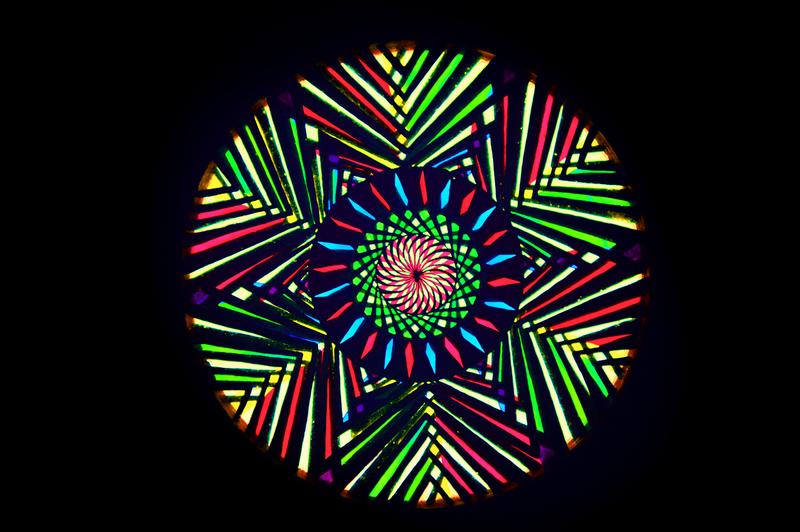The chromatrope and the suggestive power of colour in nineteenth-century France
The chromatrope is an animated slide, consisting of two painted glass plates with bands of vibrant colours forming abstract ornamental designs. The slides were rotated in opposing directions via a frame fixed to a crank that, once inserted into the magic lantern, enabled the projection of colourful compositions in motion onto a screen. Thanks to the public success of the shows presented at the optical theatre of the Royal Polytechnic Institution of London by the painter and lanternist Henry Langdon Childe, the chromatrope became a very popular attraction in French theatres from the 1840s onwards. It played a role as both entertainment and instruction, aiming to educate the spectator on colour theories. While the cultural origins of the instrument are related to a kind of hybridization between the pre-modern tradition of pyrotechnics displays and the more recent developments in industrial ornament, its longevity over the course of the 19th century can be explained by the evolution of its status and the academic discourses that accompanied its transition from optical physiology to the psychophysiology of colour. Due to the captivating and repetitive movement of its multicoloured rosettes, the chromatrope, with its potential of suggestive projection, was considered capable of psychologically conditioning the spectators. By virtue of this power of suggestion, the instrument is thus described both as a mechanism of spectacle and as a hypnotic device for therapeutic purposes.

Chromatrope (détail), Angleterre, seconde moitié du XIXe siècle, plaque animée peinte à la main, Ø 70 mm. Collection particulière. (Photographie : Christian Mayaud). © Institut national d’histoire de l’art, Paris.
Alessandra Ronetti is a doctoral student in modern art history at the Scuola Normale Superiore di Pisa and the Université Paris 1 Panthéon-Sorbonne. She was a visiting researcher and adjunct professor at New York University in 2016. Her thesis, Chromomentalisme. Psychologies de la couleur et pratiques visuelles en France au passage du siècle (1880-1914), supervised by Pascal Rousseau, relates to the broader impact of the various theories of colour psychology on the visual culture of the late 19th century until the early 20th century.
Keywords: chromatrope, colour, magic lantern, psychophysiology, chromotherapy, hypnosis, ornament, pyrotechnics
Citation: Alessandra Ronetti, « ‹ Fasciner l’attention ›. Le chromatrope et le pouvoir suggestif de la couleur en France au XIXe siècle », Transbordeur. Photographie histoire société, no. 1, 2017, pp. 134-149.